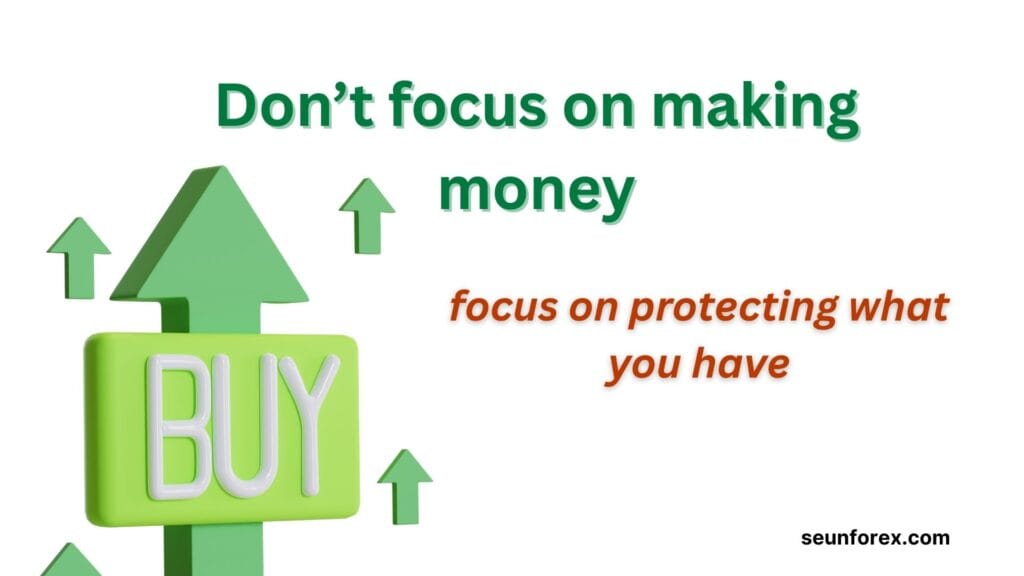
Introduction: The Silent Struggle of Traders
Every trader knows the sting of a losing trade. You do your analysis, set your stop loss, and hit buy or sell with confidence. For a moment, you feel like a master of the market. But then the screen flickers, the price moves against you, and within minutes your “perfect setup” turns into another painful red number.
This is where trading anxiety kicks in. Your chest tightens. Your palms sweat. Thoughts rush in:
- Should I add more?
- Should I cut it now?
- What if I lose again?
This isn’t just about money—it’s about trading psychology and how fear distorts decisions. It isn’t the loss itself that destroys accounts—it’s the loss control mistakes that follow. Without emotional discipline, small setbacks snowball into bigger ones.
Wall Street veterans have a saying: “You don’t lose to the market—you lose to your mind.” That’s why learning how to overcome fear in trading is the real edge.
“It’s not the trade that kills you. It’s how you react to it.”
Trading anxiety during losses is the silent killer of many trading accounts. Even smart traders with solid charts, strategies, and risk management rules fail when emotions take over. Once fear in trading shows up, logic disappears. Fear leads to hesitation. Hesitation leads to mistakes. Mistakes lead to even bigger losses.
Think about it: how many times have you…
- Doubled down on a losing trade instead of practicing proper loss control?
- Taken profits too quickly just to “feel safe,” sacrificing your trading discipline?
- Avoided placing the next trade because trading anxiety from your last loss still haunted you?
If so, you’re not alone. This cycle has ended more trading careers than bad strategies or poor timing. The truth is, your greatest opponent in the market isn’t price action—it’s your own mind.
In this guide, you’ll discover 7 proven steps to master your mindset during trading losses. These steps draw on trading psychology, research in human performance, and lessons from legendary traders like Paul Tudor Jones, Jesse Livermore, Mark Minervini, and Mark Douglas.
If you’ve ever felt trapped by revenge trading, emotional paralysis, or fear after a loss, this roadmap will help you build resilience, stay calm, and practice emotional discipline every time you face the markets..
🧠 Step 1: Accept Losses as Tuition Fees

Every successful trader eventually discovers the truth: losses are the price of admission.
Instead of treating them as failures, treat them as tuition fees. Just as students pay universities to learn, traders pay the market through their mistakes.
Why Acceptance Matters
The problem begins when traders personalize losses.
They see a red number and immediately connect it to their identity:
- “I’m a bad trader.”
- “Maybe I’ll never make it.”
- “I should have known better.”
This emotional attachment creates anxiety. Instead of seeing the trade as one event in a probability game, you interpret it as proof you can’t succeed.
Mark Douglas, in Trading in the Zone, explained:
“Anything can happen. You don’t need to know what will happen next in order to make money.”
This is the essence of trading: probabilities, not certainties.
Case Study: Jesse Livermore
Jesse Livermore—known as the “Boy Plunger”—made and lost several fortunes in his lifetime. What set him apart from amateurs wasn’t that he avoided losses. It was that he could take a hit, learn, and move forward.
He famously said:
“The game of speculation is the most fascinating game in the world. But it is not a game for the stupid, the mentally lazy, or the man of inferior emotional balance.”
Practical Exercise
Next time you lose a trade, do this immediately:
- Write down what worked.
- Write down what didn’t.
- Extract one clear lesson.
This transforms a painful loss into a profitable experience.
Losses don’t break traders. Refusing to accept them does.
⚖️ Step 2: Reframe the Fear of Drawdown

Few words scare traders more than drawdown. Watching your equity curve dip is like watching your confidence drain away.
But here’s the truth: drawdowns are normal. Even hedge fund managers with billions under management experience them.
Reframing Losses as Inventory
Think of your trading account like a store. Some products sell fast, others don’t. When inventory sits too long, you discount it and move on.
Losses are simply inventory clearance. They are not failures—they are costs of doing business.
Warren Buffett said:
“The stock market is designed to transfer money from the Active to the Patient.”
How to Reframe
- Stop saying: “I lost $500.”
- Start saying: “I invested $500 to learn that this setup is low probability.”
This simple reframe turns fear into feedback.
Quick Tip
Journal your drawdowns. Write how you feel, how long recovery usually takes, and what behaviors you notice. Over time, you’ll see patterns—and this awareness reduces anxiety.
🧘 Step 3: Build a Ritual to Reset Emotion
Anxiety snowballs because emotions carry over from one trade to the next. That’s why elite performers use rituals to reset.
The Power of Reset Rituals
In sports, Rafael Nadal performs the same sequence before every serve. Why? To anchor focus and clear his mind.
In trading, you can do the same. Examples:
- Step away from your screen for 5 minutes.
- Do deep breathing: inhale 4 sec, hold 4, exhale 4.
- Write a one-line reflection: “This trade is complete. I am neutral again.”
Why It Works
Rituals train your brain to separate one event from the next. This prevents revenge trading and the emotional snowball effect.
Exercise to Try
After your stop loss is hit:
- Close your eyes.
- Take three deep breaths.
- Say aloud: “That trade is complete. I return to neutral.”
Simple. Powerful. Game-changing.
📊 Step 4: Rely on a Tested Trading Plan
Anxiety thrives on uncertainty. If you’re not 100% confident in your system, every loss feels like evidence that your strategy is broken.
The Role of a Trading Plan
A real trading plan defines:
- Entry rules
- Exit rules
- Position sizing
- Risk per trade
When you follow a tested system, losses stop feeling random. They become expected outcomes within a long-term edge.
Example
Imagine your system has:
- Win rate: 30%
- Risk-to-reward: 1:5
That means 7 out of 10 trades lose. But the winners cover all losses—and more.
If you don’t understand this math, the 7 losses will crush you emotionally. If you trust it, you’ll stay calm until the big wins arrive.
Lesson from Mark Minervini
Mark Minervini, who won the 2021 U.S. Investing Championship with 334.8%, once said his edge wasn’t avoiding losses—but sticking to his rules with discipline.
💵 Step 5: Control Position Size Like a Pro

Big trades create big anxiety. Small trades create manageable stress.
The Sleep Test
Paul Tudor Jones said:
“Don’t focus on making money; focus on protecting what you have.”
If you can’t sleep at night because of a trade, your position size is too big.
Formula for Peace of Mind
Risk no more than 1–2% of your account per trade.
Example:
- $10,000 account
- 1% risk = $100 per trade
Even after 10 straight losses, you still keep 90% of capital.
This is how pros stay calm in losing streaks.
🎯 Step 6: Train Your Subconscious with Exposure
Anxiety is the brain’s way of warning: “This feels unsafe.” To reduce fear, you need exposure training.
The Power of Simulation
Use demo accounts or backtesting to practice. By exposing yourself to losing streaks in controlled environments, your subconscious learns: “This is survivable.”
Exercise
- Backtest 100 trades.
- Record losing streaks.
- Notice how recovery happens afterward.
This builds deep confidence that losses don’t mean the end.
🌍 Step 7: Build Resilience Beyond Trading
The final step is to strengthen your life outside trading.
When trading is your only identity, every loss feels like life or death.
Lifestyle Habits That Help
- Exercise: Lowers cortisol and improves mood.
- Sleep: Boosts decision-making.
- Community: Trading groups and mentors provide emotional support.
Bigger Perspective
Even legends like George Soros and Stanley Druckenmiller have taken massive losses. What made them great was resilience.
When trading is just one part of a balanced life, losses stop feeling like the end of the world.
🧭 Final Takeaways
Let’s recap the 7 steps to mastering your mind during losses:
- Accept losses as tuition fees.
- Reframe fear of drawdown.
- Use rituals to reset emotion.
- Trust a tested trading plan.
- Control position size.
- Train your subconscious through exposure.
- Build resilience outside trading.
Losses don’t define you. Your response does.
👉 For a deeper dive into tracking mistakes and fixing them, check out our guide on Journaling in Trading: Mistakes and Fixes.
Trading is not a sprint—it’s a marathon. Each loss is not your enemy—it’s a lesson.
Call to Action
If this guide helped you, share it with another trader who struggles with anxiety.
And if you want more insights on trading psychology, risk management, and market strategies—subscribe seunforexTrader today.
Because the real edge isn’t just in the charts—it’s in mastering your mind.